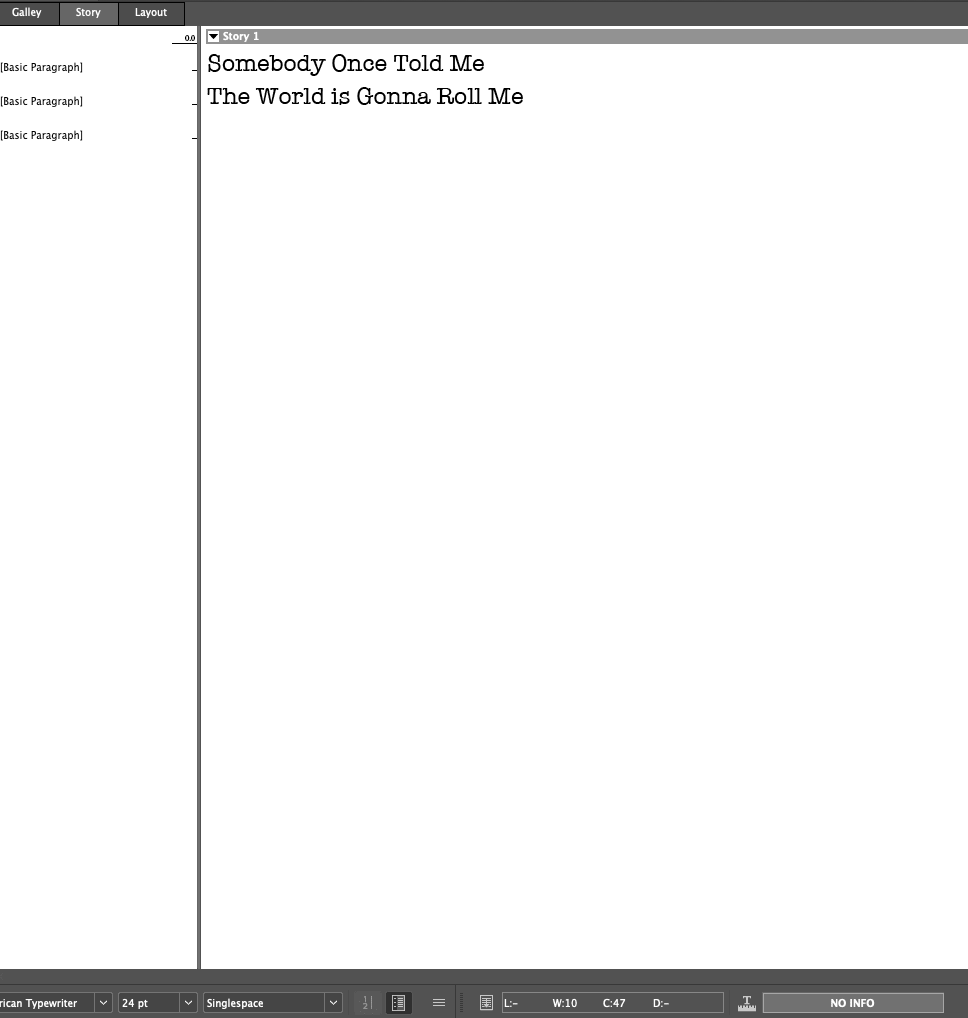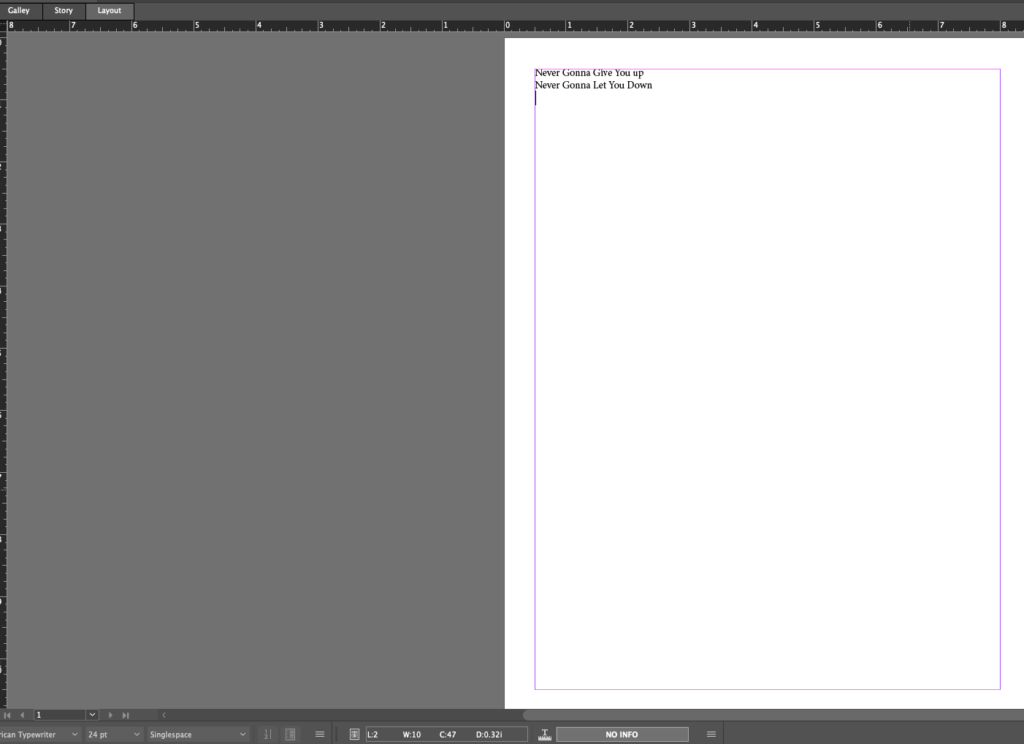Perhaps one of the most confusing offerings in Adobe’s Creative Cloud is Adobe InCopy. Adobe has always focused on visual editing software such as Photoshop, Illustrator, Premiere, InDesign, Spark, etc. A majority of their products are focused on visual creations i.e., photos and videos. But Adobe InCopy is very different. It is a word processor that is meant to be used with Adobe InDesign. So to help you get rid of all the confusion about this program and why it even exists, here’s a detailed article.
Let’s begin with its users. Adobe InCopy is meant for writers, as it is a word processor. But before you prepare to download it and unleash the Tolkien inside it, there is a condition. It is not meant for every writer. Sounds confusing, right? This software is made for copywriters, column writers for magazines, products, and media writers who work in collaboration with designers. In a nutshell, this program is for writing content that aids visual media such as photos or artworks. Let’s take an in-depth look at InCopy.
Adobe InCopy is the twin of InDesign
One look at the interface of InCopy and you’ll agree with me that it does not look like a great word processor. It is more akin to a word processor made in 2002. Typing in InCopy feels like I’m about to hack into some international bank’s mainframe. Or I am about to create a new app. But why is InCopy like that? It is because it’s not meant to be used independently. InCopy shines when it is used with InDesign. And when it is, it surpasses all the other word processors in doing what it can do.
Word processors like Microsoft Word or Google Docs are meant to write. The layout is not the general focus for these programs and adding images or media files is a nightmare (especially Microsoft Word). These are meant to write the next bestseller novel or the article on how to handle two kids for someone’s mommy blogs. Or for me to write this article. Here’s a quote from me to surmise the entire paragraph.
Writers use these word processors to create content that focuses on what is presented rather than how it is presented.
A very handsome writer at Techcity Times 😉
Adobe InCopy is used to create written content for magazines, flyers, posters, cards, product packaging, promotional content, etc where the layout of the text and media is the main focus. In other words, here how the content is presented matters a lot. For people who are unaware, Adobe InDesign is a graphics layout editor used for creating visual and textual designs for magazines, flyers, etc.
Instead of writing content for these layout designs separately in word processors, InCopy works with the InDesign layout file which allows writers to write content in the layout the designer has designed. This close-knit process allows for better workflow and brilliant capabilities, enabling designers to create products and writers to write content more efficiently.
The basics of Adobe InCopy

If you have been using Adobe products then InCopy would feel a lot familiar, but for a writer, it might get a bit frustrating. You can choose the size of the document to start with and there are three view settings; Gallery, Story, and Layout. There are other features as expected from word processors.
Here are some features of InCopy:
- Optical margin alignment
- Access to Adobe Fonts
- Spacing and alignment
- Brilliant spellcheck
- Footnote
- Endnote
- Hyperlinks
- Edit history
- Tables and cells addition
- Notes
- Edit history
- Comments by multiple users
- Case change
- Multiple pages set up
Gallery mode: Gallery mode in InCopy allows you to look at the editable text, the line numbering, and the text type such as the heading, paragraph, title, etc. This lets you focus on the technical aspects of your text such as spacing, lines, markups, etc.

Story mode: This mode gets rid of the line numbering to give more space for the text-editing area. The text-type is still present which can be resized. This mode lets you focus on the content of the text and aid in editing and proofreading.

Layout mode: This mode shows the entire document with the images and the entire layout. This allows writers to see how their content is looking in combination with media. The layout is designed in InDesign by the designer or you if you are both writer and designer. This mode lets you see how the document will look finally.

The benefits of InCopy
Adobe InCopy is designed for collaborative work. The greatest advantage of InCopy is not in its features, but how seamlessly it works with InDesign and with Adobe’s Creative Cloud overall. Imagine writing the content, not knowing how the texts will look in the design layout. The disconnect between designers and writers can lengthen the process and create a mess (literally, in the design).
With InCopy and InDesign, writers, editors, and designers can work simultaneously on the same document, editing multiple assets at the same time. With the feature of adding comments, the whole collaborative process increases productivity by many folds. Using InCopy just as a word processor would not be the best idea since it is not meant to be used as a single program.
InCopy is also great for copywriters who write the catchy taglines, product descriptions, etc since what they write depends heavily on the media that accompanies it. I would say that InCopy is made primarily for copywriters and editors in product marketing, promotional content, advertising, etc.
Cost and justification
Adobe InCopy costs $4.99 per month and while this might look cheap, it’s of little use. $4.99 is for the single app and as mentioned before, just InCopy is almost of no use. Getting the creative cloud is the better option but if you in the industry, you’ll have to get the CC that costs $52.99 per month. While the price is high, the fluidic workflow that it allows is worth it.
You might think that getting individual apps would be better than getting the CC since InCopy and InDesign both cost less than the Creative Cloud price, but that is not true. Here’s how much it’ll cost you if you get individual apps.
If you want just the InDesign and InCopy and don’t need other Adobe apps, you can buy individual apps. The price to pay for that would be $26 per month. But InDesign needs Illustrator for all the vector artworks, so you have to get that as well. I’ll link an article about InDesign at the end of this article for your convenience.
So Illustrator and the twins would cost you $47 per month. But not everything in your document will be illustrations. If you are getting into the professional zone, you’ll have to work with raw image files and for that you need Photoshop. Adding that to the cart and the total becomes $68, way more than the entire CC price. So if you want to get into the professional field, CC is the best choice. So that was the price and the justification for it. And yes, this is not sponsored by Adobe by any means. It is just TechCity Times trying to make you get the best value for money.
This hopeful note concludes the article. As promised, here is the article for Adobe InDesign that you should read to get to know the twins better. But we love having you here with us so we’ll add more articles for you to read:
